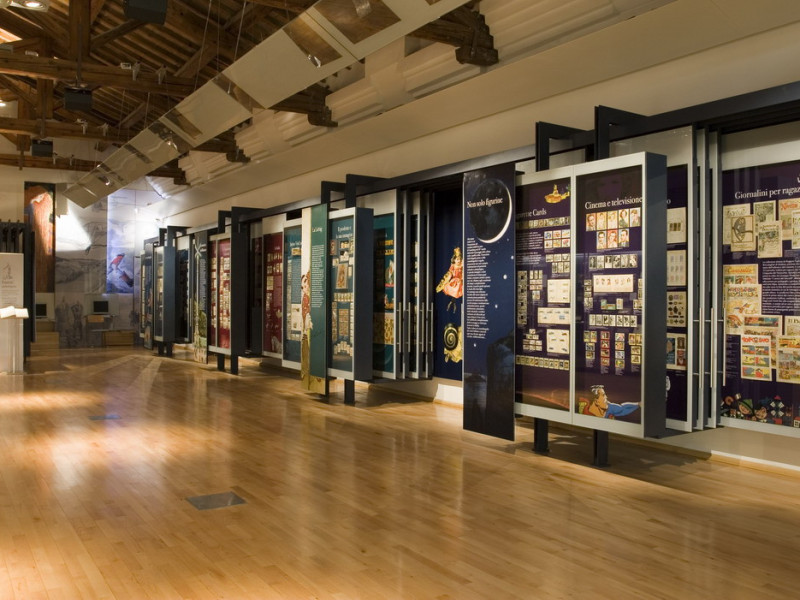Museo della Figurina Panini
The richest existing worldwide figurines and related materials from the first half of the nineteenth century until the present becomes the museum in 1992 by Giuseppe Panini, founder of the printing industry (1961), which donates to the City of Modena its entire collection formed with the intent to revisit history and development of this "material" advertising, formed by figures and related material, object in time of intense interest to collectors. The heritage of the museum consists of about 500.000 specimens, of which only a part in the show. These include nuclei of great rarity as Liebig series, published between 1873 and 1975 by the same company producing the extract of meat; this group includes the sketches, proofs and lithographic stones. Thousands are also the figures of Parisian Department Stores "Au Bon Marché" and other manufacturers, the nineteenth-century American cigarettes cards, matchboxes, the candy wrappers, the barber calendars and other rarities that, on the whole, represent a irreplaceable documentary archive for the history of graphic design and communication pubblicitaria. The museum collection brings together beside the figurines themselves, materials related to technical and function: small prints, matchboxes, stamps seals with paper money, menus, calendars, albums published by the firms to collect the series or created as a hobby by collectors and many other materials yet. The exhibition hall is fitted with six "cabinets" exhibitors, conceived as an album to browse, each dedicated to a specific theme: "The antecedents" (the anniversary of iconographic themes from prints to contemporary figurine), "Chromolitography" (the chromolithographic invention of printing and the printing process from sketch to the figurine), "The emergence and spread" (the onset of the French figure in the second half of the nineteenth century until the adventure Italian prize competitions in the thirties of the twentieth century ), "The Liebig" (the world's most famous historical collection), "Not only figurines" (cigarette cards, calendars, stamps seals with menus, place cards, labels, hotel and other smaller collections), "The modern figurine" (figurines sports and albums since World War II). Alongside the permanent exhibition, a great showcase houses temporary exhibitions.

